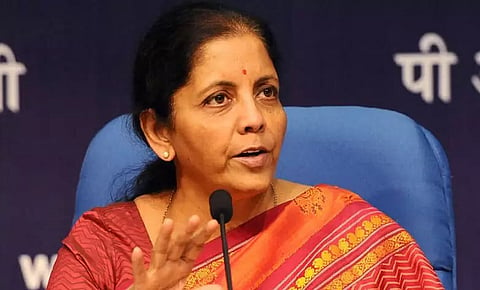
- Home
- Live Blog
- Breaking News
- Top Headlines
- Cities
- NE News
- Sentinel Media
- Sports
- Education
- Jobs

Ravindra Kumar
Mishra
(Former Chief Consultant, Ministry of Education (formerly MHRD), GOI. He can be reached at rkmishrajee@gmail.com)
The Economic Survey 2020-21, dedicated to Covid warriors, states that online education took off in a big way during the pandemic. The percentage of enrolled children from government and private schools owning a smartphone increased enormously from 36.5% in 2018 to 61.8% in 2020 in rural India. "If utilized well, the resultant reduction in the digital divide between rural and urban, gender, age and income groups is likely to reduce inequalities in educational outcomes," adds the pre- budget economic survey.
PM eVIDYA, the survey mentions, is a comprehensive initiative to unify all efforts related to digital/online/on-air education to enable multi-mode and equitable access to education for students and teachers. Around 92 courses have started and 1.5 crore students are enrolled under Swayam MOOCs which are online courses relating to NIOS.
PRAGYATA guidelines on digital education have been developed with a focus on online/blended/digital education for students who are at present at home due to closure of schools. The MANODARPAN initiative for psychological support has been included in Atmanirbhar Bharat Abhiyan.
India has attained a literacy level of almost 96% at the elementary school level. As per National Sample Survey (NSS), the literacy rate of persons of age 7 years and above at the All India level stood at 77.7 per cent whereas female literacy rate remained below national average among social groups of SC, ST, OBC including religious groups of Hinduism and Islam.
The Survey pointed out high dropout rates at various levels of schooling and lack of affordability in higher education as areas of concern. The Survey emphasized that Samagra Shiksha 2018-19, was launched to envisage school education as a continuation from pre-school to senior secondary level to provide access to education to all.
The government announced the new National Education Policy, 2020 replacing National Policy on Education, 1986 to provide quality education in schools and institutions of the government in affordable and competitive manner. The new policy aims to pave the way for transformational reforms in school and higher education systems in the country. It aims to provide all students, irrespective of their place of residence, quality education system with special focus on the marginalized, disadvantaged and underrepresented groups. Some of the other programs and schemes for school education during 2020-21 include Samagra Shiksha, Enhancing Capacity Building of Teachers, Focus on Digital Education, strengthening school infrastructure, focus on girl education, focus on Inclusion, focus on sports and physical education and focus on regional balance.
The Government has taken several policy reforms for skill development recently. The Unified Skill Regulator- National Council for Vocational Education and Training (NCVET) was operationalized. For the first time, the Awarding and Assessment Bodies' Guidelines were notified in October, 2020 for more credible certifications and assessments. Pradhan Mantri Kaushal Vikas Yojana 3.0 was rolled out in 2020-21 with a tentative target to skill 8 lakh candidates including migrants. The grading of ITIs has been undertaken to improve their quality and transparency. Integration of Vocational Education and Training (VET) in general education has received a big fillip with the NEP, 2020 envisioning giving 50 per cent of school and higher education candidates exposure to VET over the next 5 years.
The Economic Survey 2020-21 states that only 2.4 per cent of the workforce of age 15-59 years have received formal vocational / technical training and another 8.9 per cent of the workforce received training through informal sources. Out of the 8.9 per cent workforce who received non-formal training, the largest chunk is contributed by on-the-job training (3.3 per cent), followed by self-learning (2.5 per cent) and hereditary sources (2.1 per cent) and other sources (1 per cent).
The unexpected and rapid expansion of the pandemic has devasted education and economy of most nations yet government efforts to resilience building cannot be undermined. Simultaneously, the responses to the pandemic might have caused disparity between log on and lesser privileged and skill development. The forthcoming budget is expected to embark on steering education with adequate fund allocation for strengthening institutions and quality education with children at centerpiece.